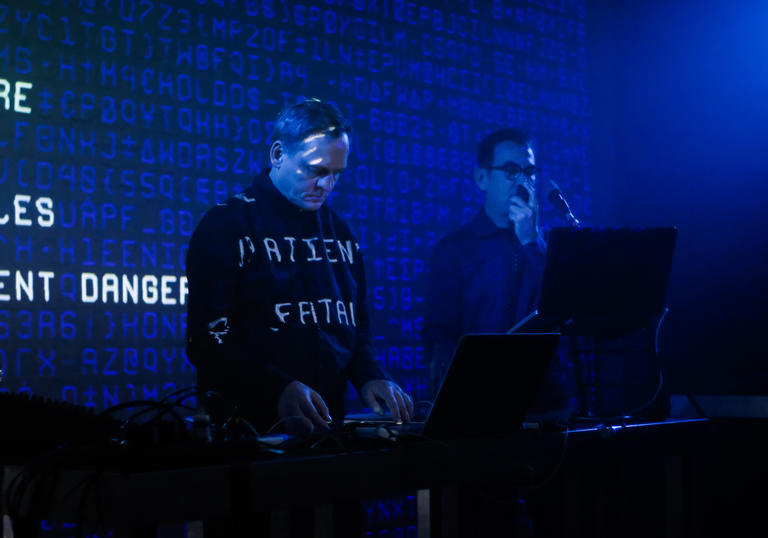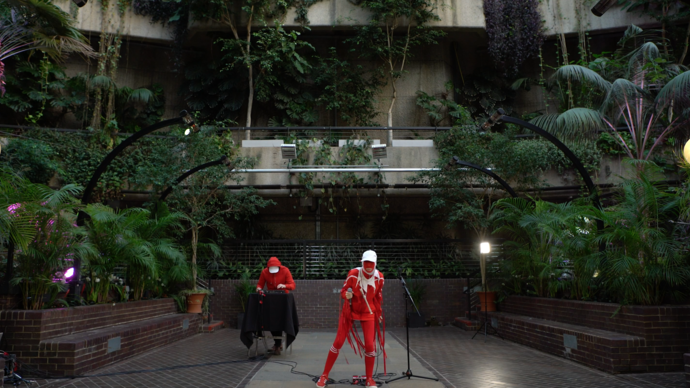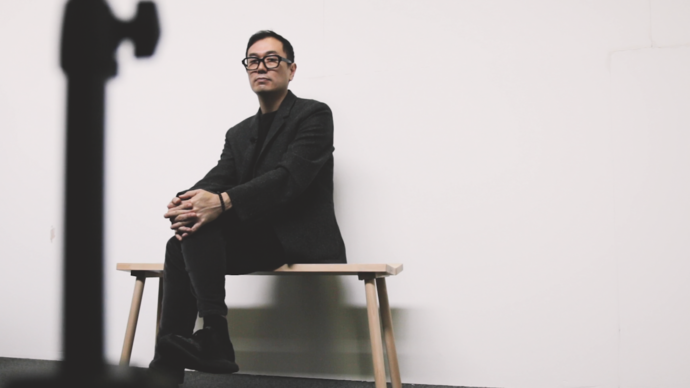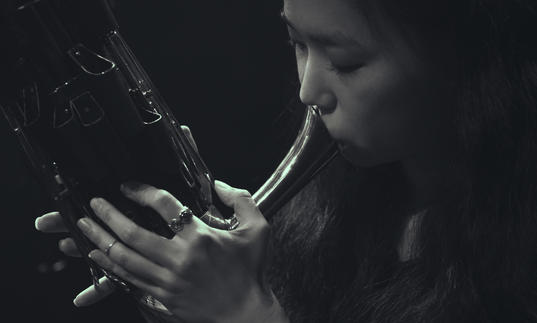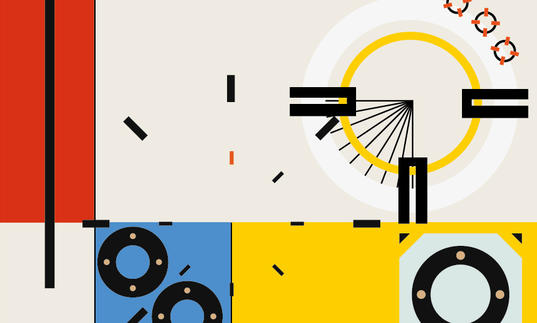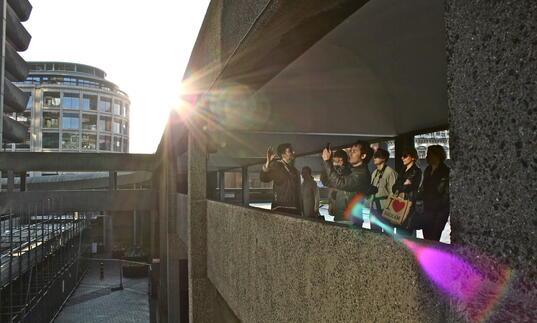Just over a decade ago, Isidore of Seville (b. 560 AD) was declared the patron saint of the internet for his attempt to record everything ever known. His gargantuan encyclopedia of the seventh-century, Etymologies, became the most widely-used textbook of the Middle Ages. Much like the internet of its time, the twenty-book opus is still revered for its preservation of classical knowledge and lore.
The connection between early representations of the world and those of the digital era are drawn out in a new multimedia project by German electronic musician Carsten Nicolai, aka Alva Noto, and French poet and performer Anne-James Chaton. Under the shared moniker of ALPHABET, the long-term collaborators revisit Isidore’s Etymologies to decode the spaces between signs and signals in the contemporary age.
In this self-titled project, performed live tonight at LSO St Luke’s as part of the Barbican's Contemporary Music programme, ALPHABET communicate in a language generated by the fusion of objective poetry and minimal music. Their blend of machinery and language presents a dense electronic sound structure, driven by the radical enigma of Chaton’s data-inspired chants and Nicolai’s deep-end dive into atmospheric techno glitches.
‘It's like we speak in exactly the same language,’ Chaton said of their collaboration in an interview with The Quietus; ‘me with this kind of poetry and Noto with his kind of electronics.’
Staying true to their reductionist approach, ALPHABET is a natural progression from the duo’s previous releases together. The project falls stylistically in line with their trance-inducing ode to ubiquitous corporate hypnotism ‘Uni Acronym’ and the pacing spoken-word anthem of ‘future past perfect.’
Turning their attention to the conceptual framework of Etymologies, ALPHABET distort the temporal dimension to uncover semiotic tendencies of then and now. The medieval encyclopedia is an early instance of tree-based organisations of knowledge: also known as a trie, or digital tree, this remains the principle of modern computing.
Chaton clarifies that in Etymologies, Isidore of Seville did not hesitate to use phonetic approximations to force his definitions.
‘I gathered all the words of the French language that can be pronounced in a proferation,’ he explains of his creative process on ALPHABET. ‘This monosyllabic database, both meaningful and phonetic, can sound in other languages close to the 'bit' in electronic music on which we could then develop other codes.’
Chaton adds: ‘The signal is the physical form of the sign, which indicates the existence of a thing. Each thing is therefore encoded by a series of sounds, which are in turn encrypted by digital units. ALPHABET plays with these relations, multiplying the possible relations between the signals and the signifiers and therefore the signifieds. Of two associated languages, that of Carsten and mine, many others can thus appear, and therefore representations of the world very varied, simple or complex.’
Nicolai also raises the idea of language as a complex form of sound. ‘It has multiple levels of understanding and a big social impact on us. You need to decode sound in different ways — always in between two contrary ways of understanding: a more intuitive level and an intellectual level.’
Channeling this interpretation through a textured process of experimentation, ALPHABET explore the broader questions around strategies devised to represent the world, recognising the context of the digital age. ‘Digital is only a way of decoding processing or storing information,’ Nicolai is keen to remind us, explaining that the project also focuses closely on content through the texts written by Chaton.
He reveals that ALPHABET was actually designed to be a book, which the performance and record are a part of. The idea, he says, has been in development for almost fifteen years. To bring the project to life, ALPHABET have also collaborated with Japanese artist Nibo to create a complex software which retains the possibility to perform live freely.
‘Alphabet mixes languages and explores the circulation between analogue and digital, even in the body of performers on stage,’ Chaton explains. ‘We constantly go through multiple forms of the sign, the graph, the sound, the writing projected on screen, its live incarnation, its digital translations, its meanings.’
He continues: ‘The challenge was not to abstract the body during the concert, whether the body of the text or the body of the performers. These continue their dialogue with the machines at the moment of performance.’
‘Our main interest for the show was about how to create systems for what allows us to synchronise text, visuals and music,’ Nicolai adds. Uniting these sensory elements, the performance of ALPHABET invites the spectator to become immersed in the symbiotic relationship between language, its digital translations and our ever-evolving ways of understanding the world.
The thirteen-track album ALPHABET is released on Noton in November 2019.
Produced by the Barbican
